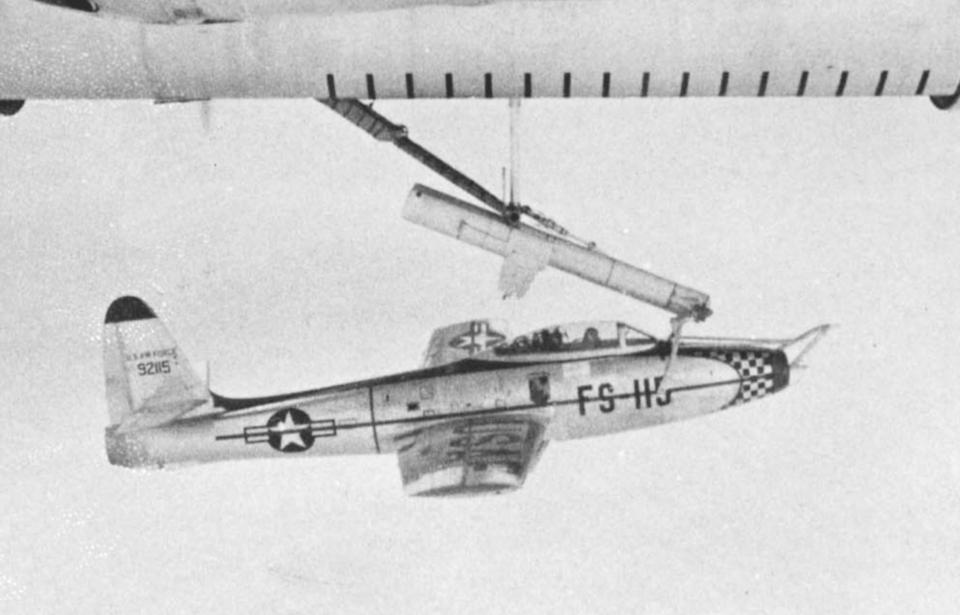As a result of the majority of the world’s powers participating in the Second World War, there were near-constant advancements in weapons technology. When the conflict came to an end and the Cold War reared its head, there was a continued need for this kind of development. In an attempt to one-up the Soviet Union, the United States launched the Fighter Conveyor (FICON) Project.
Bombers were too big for reconnaissance missions
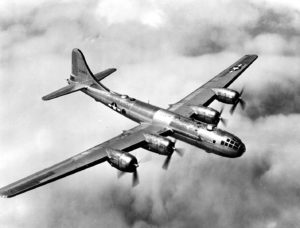
The primary difference between the Cold War and the Second World War was that the former was more about reconnaissance than actual battles. The US was flush with large bombers that played prominent roles during WWII, and the decision was made to refit them for different duties.
Boeing B-29 Superfortresses were modified to serve as photographic reconnaissance platforms. There was a benefit to this, as the bombers had tremendous range and could hold very large cameras. The Convair B-36 Peacemaker was also used for spy missions, as was the RB-36 variant.
In the early days, the RB-36 was an excellent option for reconnaissance. It could fly at altitudes jet fighters couldn’t, allowing it to easily fly above other countries. The strategic bomber could also maneuver more successfully than Russian fighters.
The need for a new idea
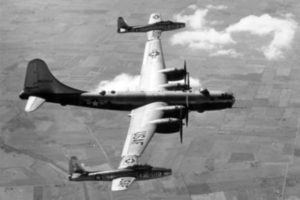
The advantages of the RB-36 Peacemaker didn’t last forever. Like America, the Soviet Union was regularly improving its aircraft, and by the early to mid 1950s had developed interceptor jets that could reach higher altitudes and maneuver just as well as American aircraft.
Multiple ideas were formulated to improve reconnaissance aircraft. One, dubbed Project Tip-Tow, arose following a 1940s test flight featuring a Douglas C-47A Skytrain and a Culver Q-14B Cadet that were attached together. Project Tip-Tow used a modified ETB-29A Superfortress with two Republic EF-84Ds attached to its wings. The idea was that the bomber could turn off its engines and rely on the fuel of the smaller fighter-bombers, thus increasing its range.
The project saw reasonable success, but the US military continued to work on other ideas. This included the much-later Project Tom-Tom, which saw two FF-84Fs attached to the wings of a JRB-36F. Similar to Project Tow-Tow and Tom-Tom’s predecessor, the Fighter Conveyor (FICON) Project, this saw some success, but the decision was ultimately made to not move forward with it, after it was agreed the concept posed too much of a risk to pilots.
Fighter Conveyor (FICON) Project
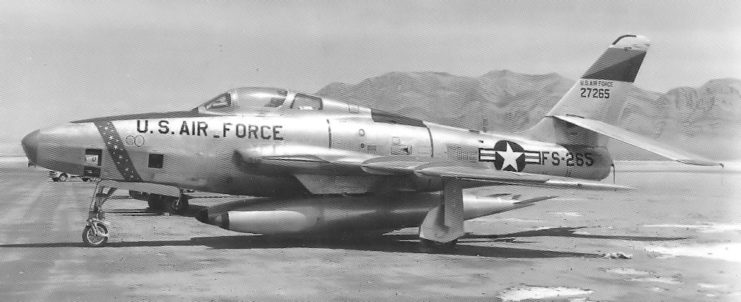
In the early 1950s, the US Air Force came up with the FICON Project. In practice, the larger B-36 Peacemaker would transport the smaller F-84 Thunderjet that by itself might not have enough range to reach its target. Once in the vicinity of the target, the F-84 would drop its payload, a nuclear bomb, before returning to the B-36 and transported back to base.
The smaller aircraft were placed in the bomb bay
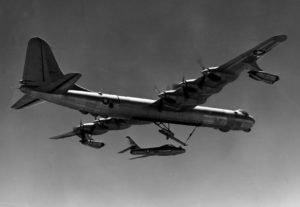
Under the FICON Project, the Air Force created a trapeze system. An F-84E Thunderjet was outfitted with a retractable hook in front of the cockpit, which allowed it to be attached to an GRB-36 Peacemaker. The cockpit, the fuselage spine and the tail fin would sit inside of the larger bomber, while the rest would be positioned underneath. This increased the GRB-36’s drag and reduced its range, but meant the F-84E’s pilot could leave his aircraft while it was attached.
The Air Force conducted a number of tests with this in the early 1950s, with the idea being that the superior flying ability of the F-84 would allow it to work through heavily defended targets to drop its payload. The jets with the hook system were later replaced by the faster Republic F-84F Thunderstreak and, later, the RF-84K Thunderflash, thus changing the FICON Project’s focus from attack to tactical reconnaissance.
Legacy of the US Air Force’s FICON Project
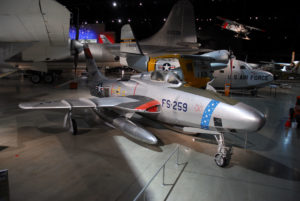
The FICON Project saw limited service with the Strategic Air Command from 1955-56. Tests showed the idea behind the system was tactically sound and worked, in theory. However, it wasn’t perfect. Simple things like adverse weather systems could make the practice unreliable, and the RF-84K Thunderflashes greatly reduced the GBR-36D Peacemaker’s ground clearance.
More from us: Northrop F-89 Scorpions Once Carried Nuclear Weapons to Combat Soviet Bombers
Re-hooking the RF-84Ks back to the larger bombers also proved incredibly difficult, even for the most experienced of pilots. The FICON Project was eventually cancelled in 1956 due to these issues, as well as the B-36 being made obsolete. The introduction of the Lockheed U-2 Dragon Lady also played a part.
The last flight occurred in April of that year. While the majority of the RF-84Ks were scrapped, some conducted reconnaissance missions with the hook apparatus still attached. Today, only three remain and can be seen at the Wings Over the Rockies Airspace Museum in Denver, Colorado; the National Museum of the United States Air Force at Wright-Patterson Air Force Base, Ohio; and the Planes of Fame “static lot” in Chino, California.
